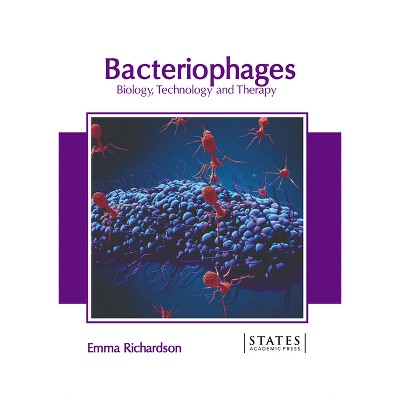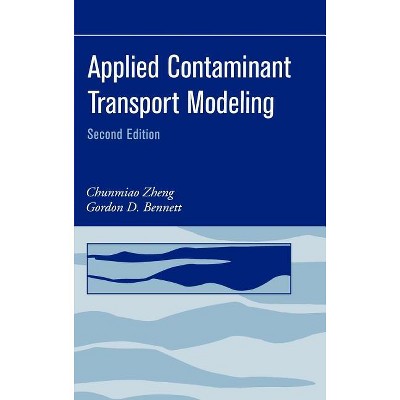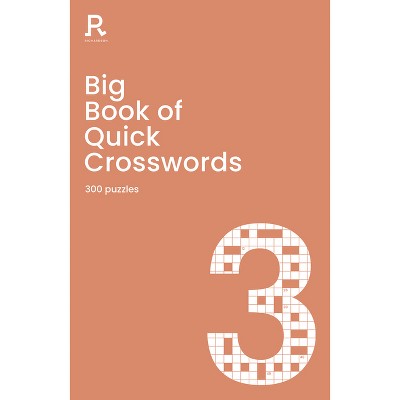$68.30 sale price when purchased online
$79.95 list price
Target Online store #3991
About this item
Highlights
- Through rivers, wetlands, streams, and lakes, the flow of water sustains life.
- About the Author: John S. Richardson was born and raised in Toronto, Canada, and earned his first degree from the University of Toronto (B.Sc. 1979).
- 350 Pages
- Science, Environmental Science
Description
About the Book
"Through rivers, wetlands, streams, and lakes, the flow of water sustains life. In addition to the myriad lifeforms that freshwater ecosystems support, including our own, they also provide opportunities for recreation and personal reflection. Unfortunately, our freshwaters have become seriously impacted and degraded by various stressors, including pollution, forestry, agriculture, urbanization, exploitation of species, and more.In this comprehensive book, Richardson lays out the origins and nature of the most prominent environmental stressors to freshwater systems. The first two chapters provide a review of freshwater biology and hydrology. Each of the next 12 chapters focuses on a particular class of stressors, interactions they may have with other stressors, and a range of solutions currently available to mitigate the problems they cause. The last two chapters pull together key concepts to focus on the restoration of freshwater ecosystems and the importance of long-term monitoring.This work is ideally suited for students in upper and graduate-level college courses focused on freshwater ecology, biology, environmental sciences, and environmental engineering, as well as practitioners in these respective fields. Today, more than ever, we need trained individuals who understand how to protect and restore freshwater ecosystems for both human and non-human use, and this book provides the essential information required to get there.Key Features:Provides 28 case studies demonstrating scientific applications for the mitigation of stressors/impacts on aquatic ecosystems and nearly 100 color illustrations and chartsDelves into impacts from both point source and non-point source pollutionAddresses issues with water withdrawals and transfers, as well as flow management and channelizationDiscusses solutions to problems resulting from erosion and sediment transportDesigned for use as a one-term college course, with each chapter covering two class periodsChapters include thought-provoking homework activities for students Includes comprehensive references for additional reading and researchWAV features selected graphs, tables, and images from the book- available from the Web Added Value Download Resource Center at jrosspub.com/wav"Book Synopsis
Through rivers, wetlands, streams, and lakes, the flow of water sustains life. In addition to the myriad lifeforms that freshwater ecosystems support, including our own, they also provide opportunities for recreation and personal reflection. Unfortunately, our freshwaters have become seriously impacted and degraded by various stressors, including pollution, forestry, agriculture, urbanization, exploitation of species, and more. In this comprehensive book, Richardson lays out the origins and nature of the most prominent environmental stressors to freshwater systems. The first two chapters provide a review of freshwater biology and hydrology. Each of the next 12 chapters focuses on a particular class of stressors, interactions they may have with other stressors, and a range of solutions currently available to mitigate the problems they cause. The last two chapters pull together key concepts to focus on the restoration of freshwater ecosystems and the importance of long-term monitoring.This work is ideally suited for students in upper and graduate-level college courses focused on freshwater ecology, biology, environmental sciences, and environmental engineering, as well as practitioners in these respective fields. Today, more than ever, we need trained individuals who understand how to protect and restore freshwater ecosystems for both human and non-human use, and this book provides the essential information required to get there.
Key Features:
- Provides 28 case studies demonstrating scientific applications for the mitigation of stressors/impacts on aquatic ecosystems and nearly 100 color illustrations and charts
- Delves into impacts from both point source and non-point source pollution
- Addresses issues with water withdrawals and transfers, as well as flow management and channelization
- Discusses solutions to problems resulting from erosion and sediment transport
- Designed for use as a one-term college course, with each chapter covering two class periods
- Chapters include thought-provoking homework activities for students Includes comprehensive references for additional reading and research
- WAV features selected graphs, tables, and images from the book--available from the Web Added Value Download Resource Center at jrosspub.com/wav
Review Quotes
"This book is exceptional in that it represents the perfect balance of fundamental knowledge about aquatic ecosystems as well as lucid examples of how that knowledge can be applied to solve complex problems." -- Steven J. Cooke, Professor, Carleton University, Ottawa, Canada "Great book for teaching and training. Unique in my view with a strong applied focus." -- Margaret A. Palmer, Distinguished University Professor, University of Maryland, and Director of the National Socio-Environmental Synthesis Center "This book is perfectly timed to be an invaluable resource for students in upper-level and graduate classes. Moreover, it will be a major information source for freshwater managers, government agencies, and conservationists." -- Klement Tockner, Ph.D., Director General of the Senckenberg Society for Natural Research, Frankfurt, Germany "For factors ranging from sediment loading to polluting solutes and microplastics, Richardson vividly describes consequences to freshwater life but then presents case studies of rehabilitation and management efforts that are helping restore more natural regimes." -- Mary E. Power, Professor, University of California, Berkley,
About the Author
John S. Richardson was born and raised in Toronto, Canada, and earned his first degree from the University of Toronto (B.Sc. 1979). From there, his academic career took him west as he earned degrees from the University of Alberta (M.Sc. 1983) and the University of British Columbia (Ph.D. 1989). Dr. Richardson spent three years at Simon Fraser University as a post-doctoral fellow before landing a faculty position at the University of British Columbia.Dimensions (Overall): 10.5 Inches (H) x 7.6 Inches (W) x .9 Inches (D)
Weight: 1.95 Pounds
Suggested Age: 22 Years and Up
Number of Pages: 350
Genre: Science
Sub-Genre: Environmental Science
Publisher: J. Ross Publishing
Format: Hardcover
Author: John S Richardson
Language: English
Street Date: May 7, 2024
TCIN: 91821071
UPC: 9781604271690
Item Number (DPCI): 247-48-9042
Origin: Made in the USA or Imported
If the item details above aren’t accurate or complete, we want to know about it.
Shipping details
Estimated ship dimensions: 0.9 inches length x 7.6 inches width x 10.5 inches height
Estimated ship weight: 1.95 pounds
We regret that this item cannot be shipped to PO Boxes.
This item cannot be shipped to the following locations: American Samoa (see also separate entry under AS), Guam (see also separate entry under GU), Northern Mariana Islands, Puerto Rico (see also separate entry under PR), United States Minor Outlying Islands, Virgin Islands, U.S., APO/FPO
Return details
This item can be returned to any Target store or Target.com.
This item must be returned within 90 days of the date it was purchased in store, shipped, delivered by a Shipt shopper, or made ready for pickup.
See the return policy for complete information.












